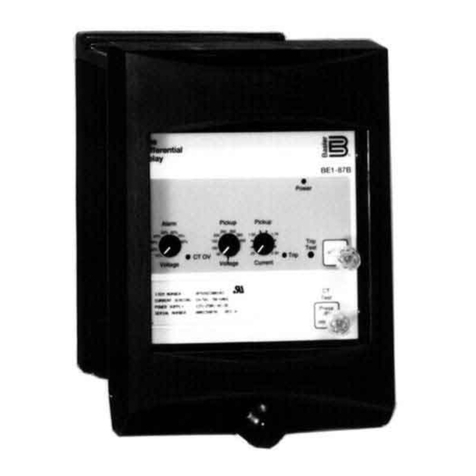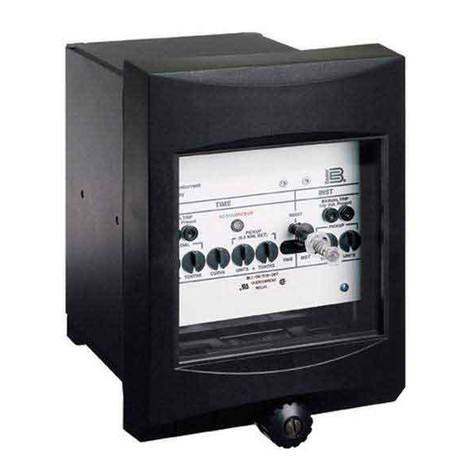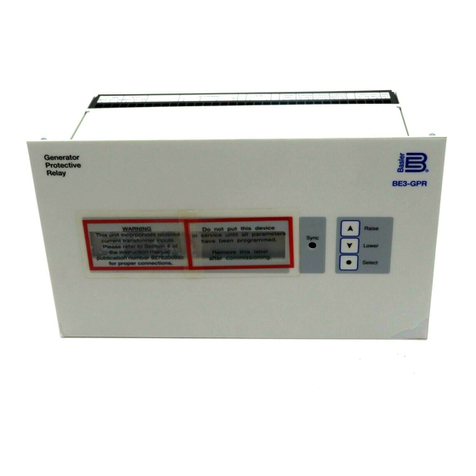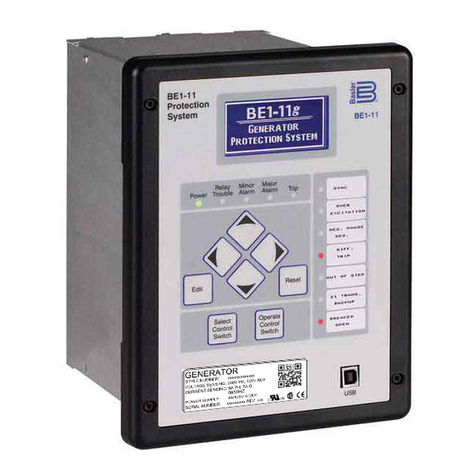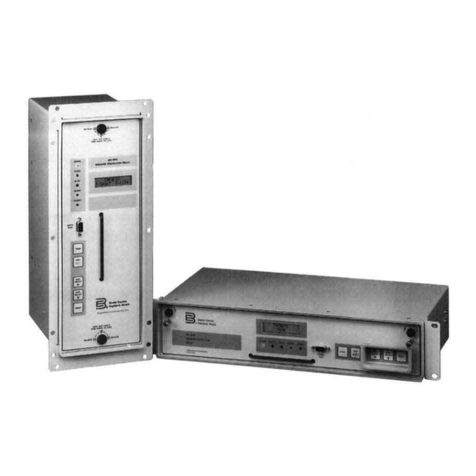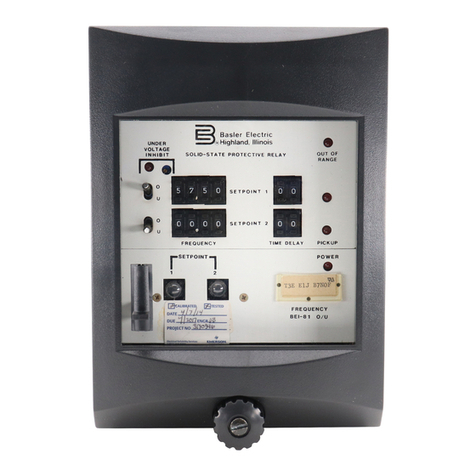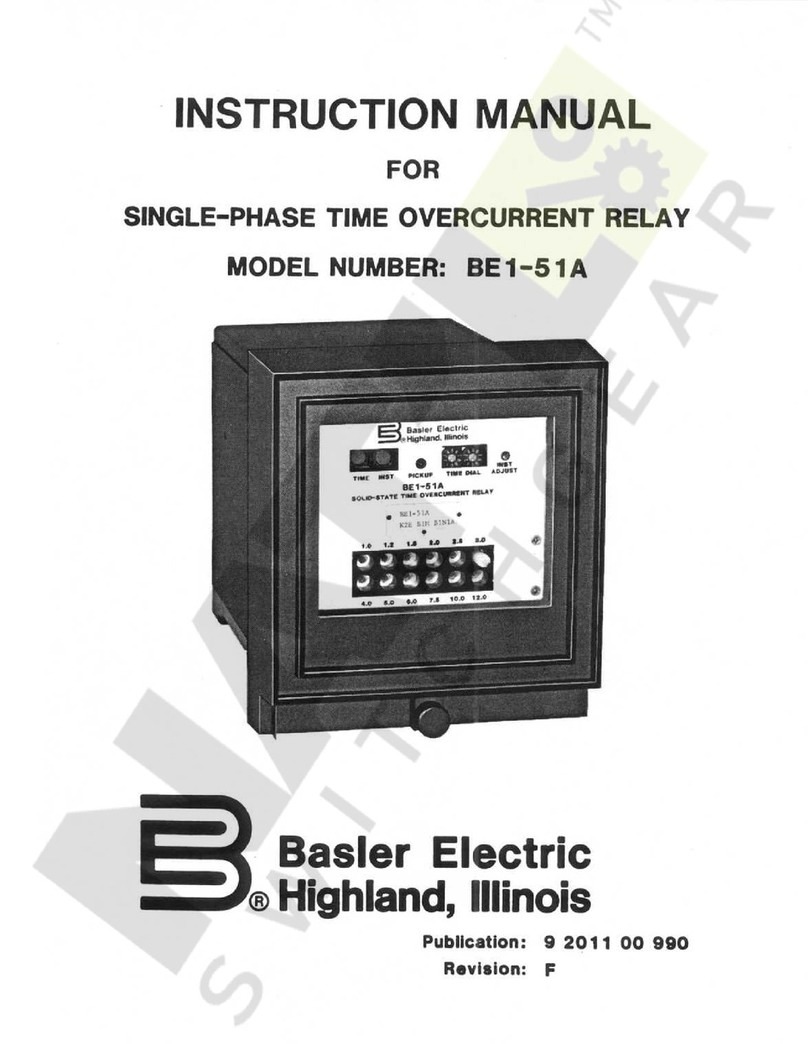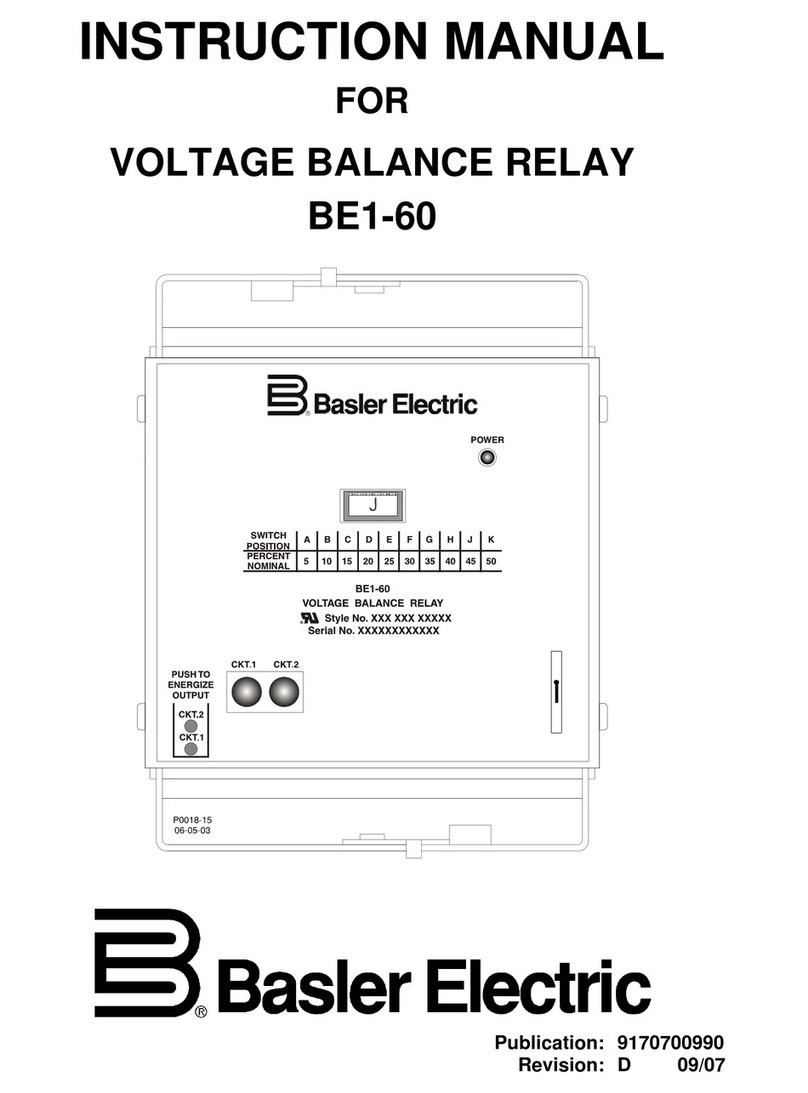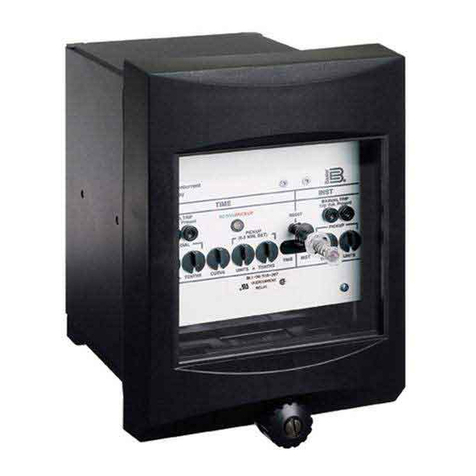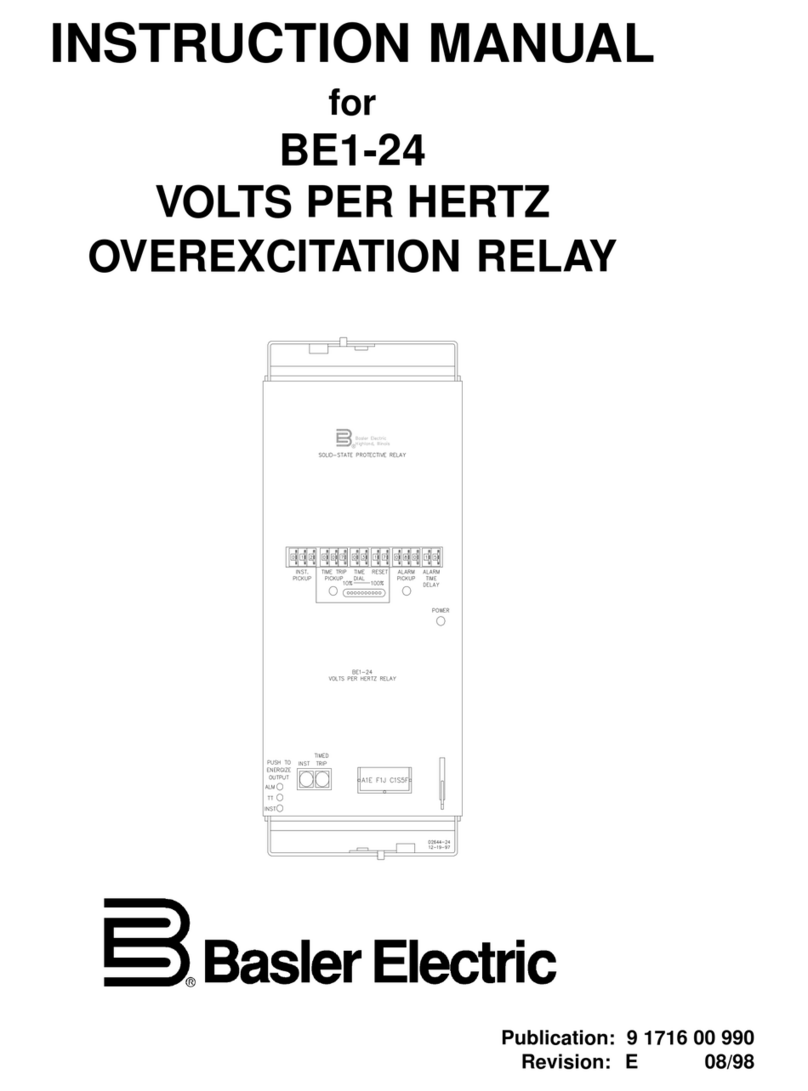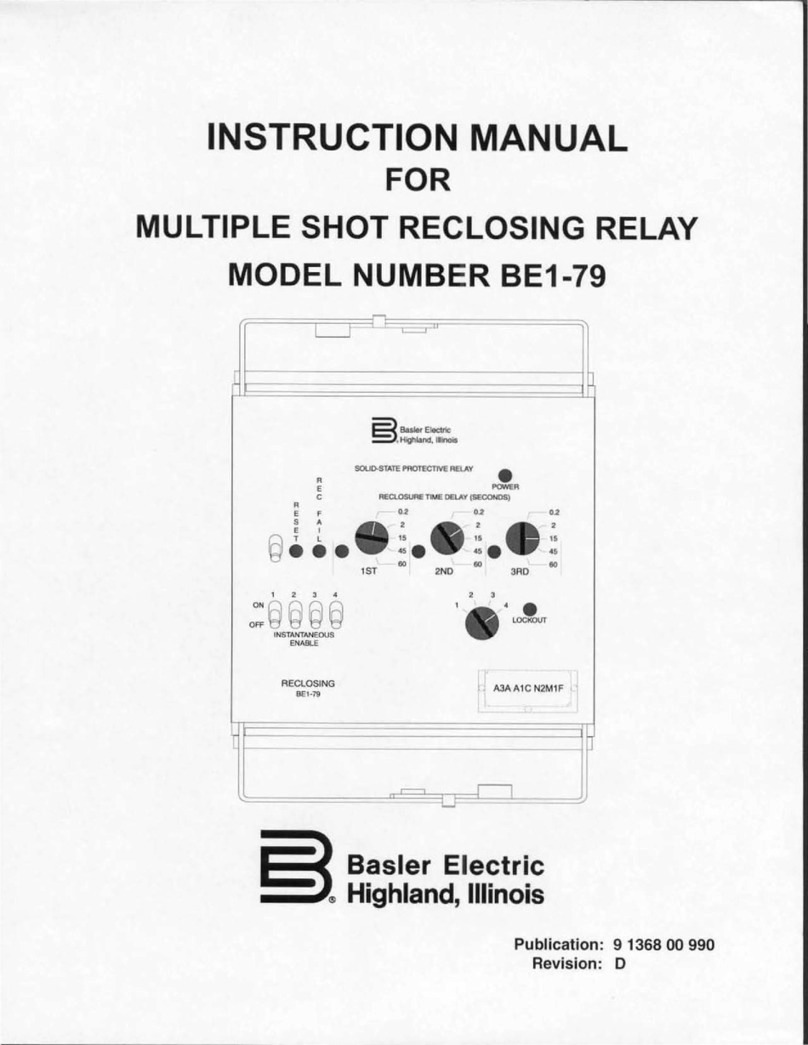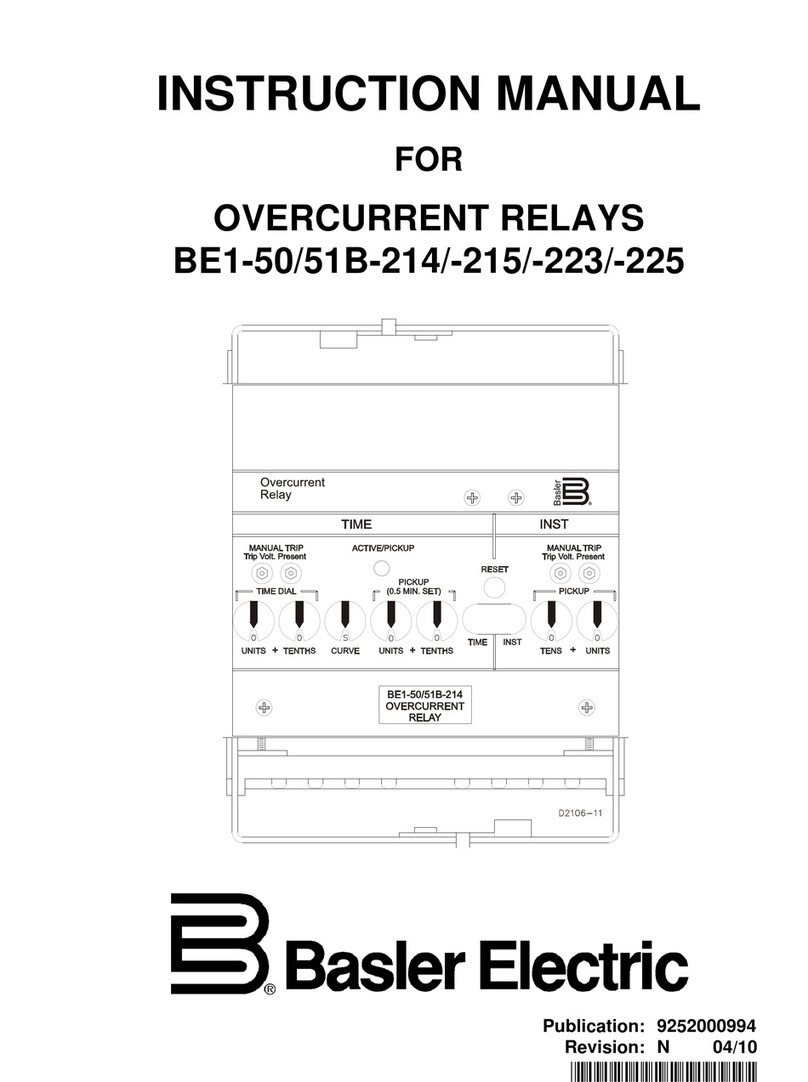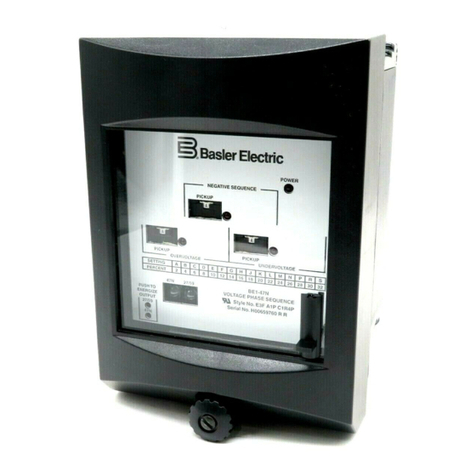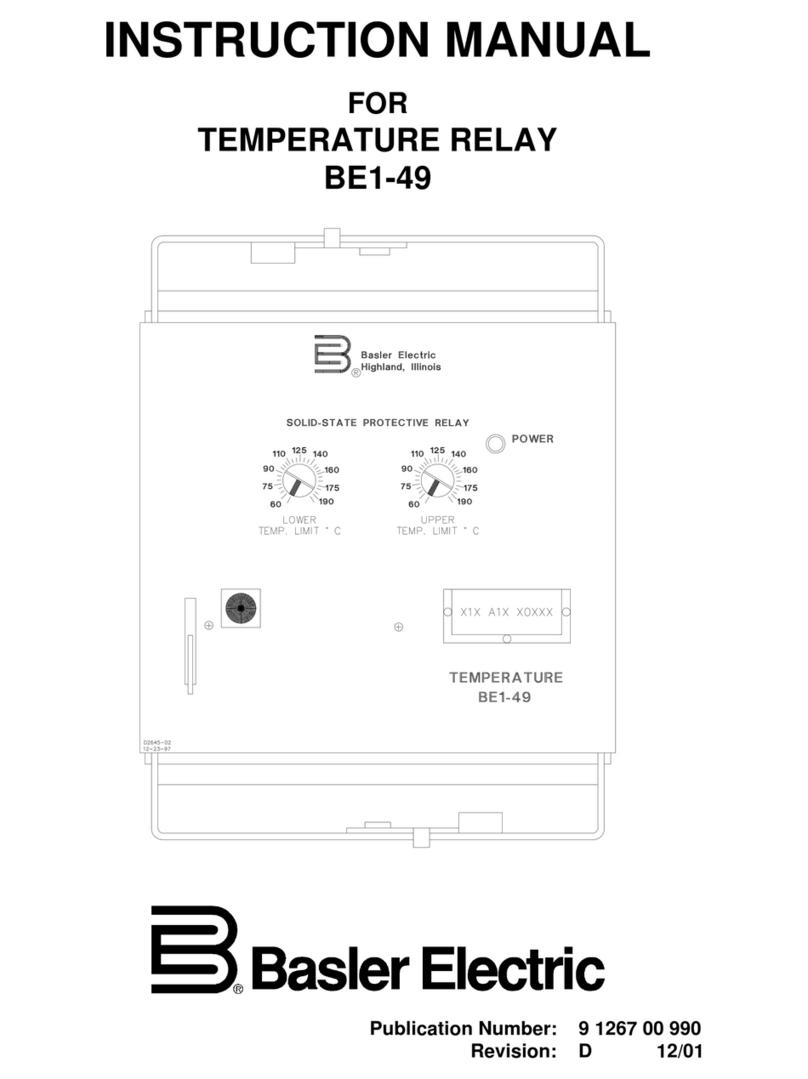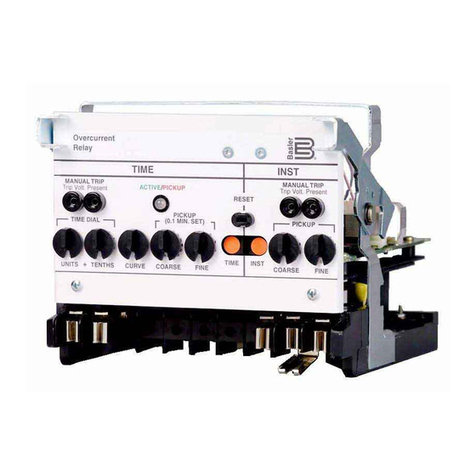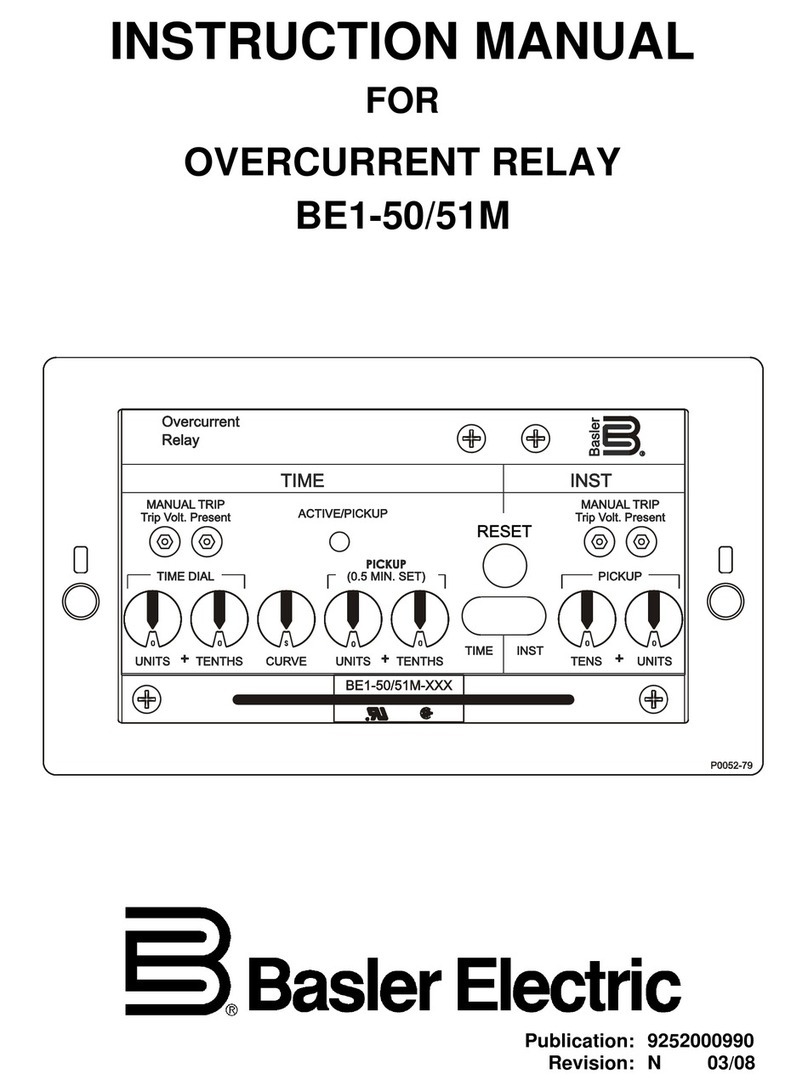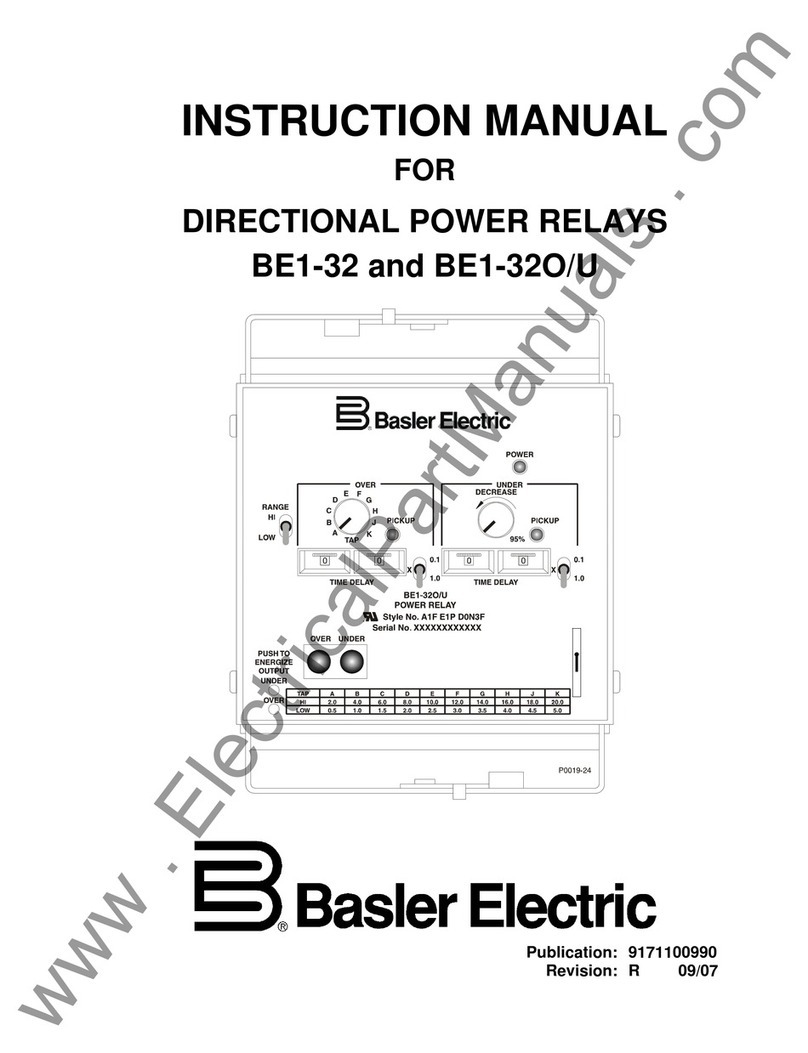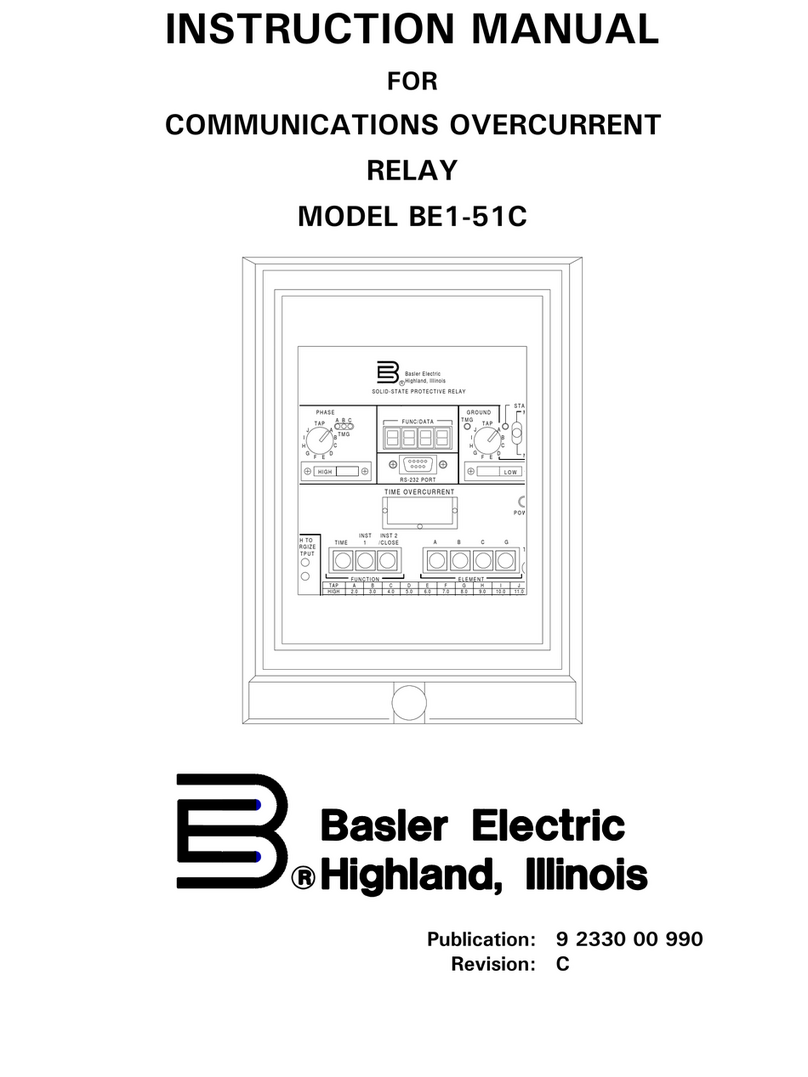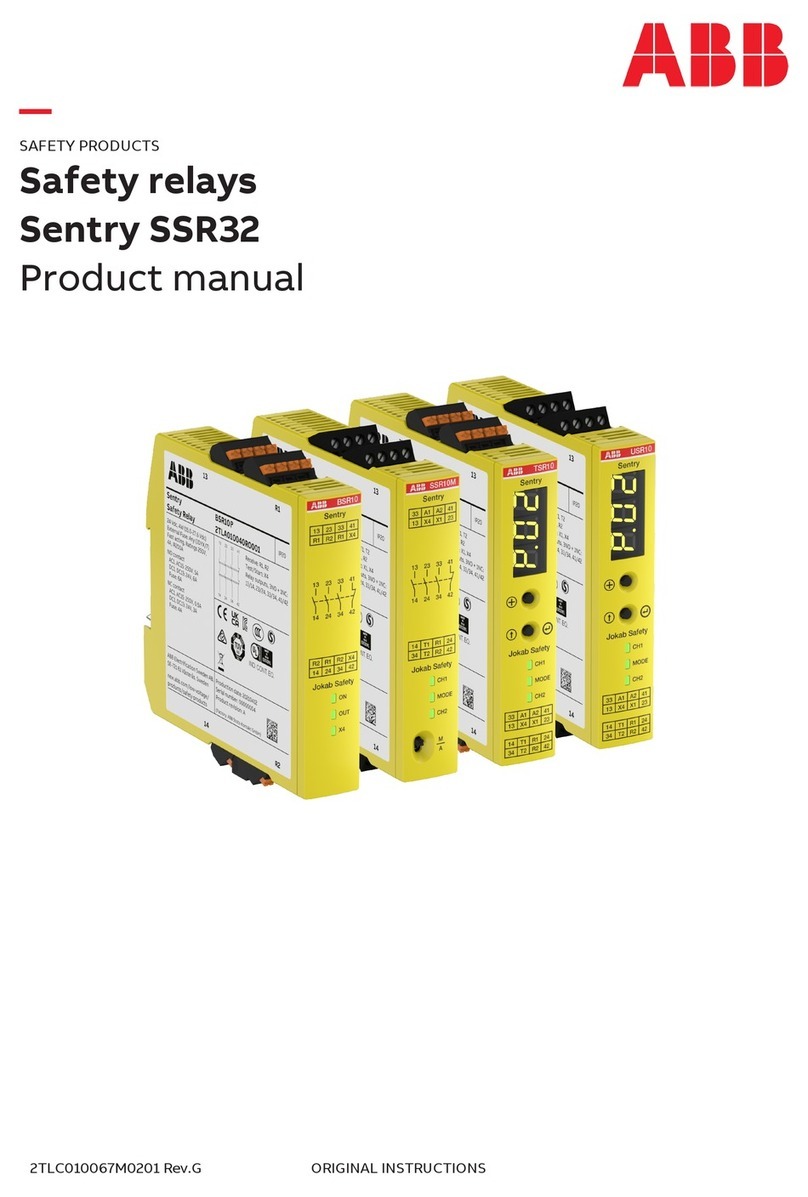
iv
%106'065 - Continued
SECTION 3 FUNCTIONAL DESCRIPTION (continued)
Modes of Operation .................................3-6
Settings Mode ..................................3-6
Status Mode ....................................3-8
Auxiliary Settings ...................................3-8
Auxiliary Setting 1 (CLP) ..........................3-8
Auxiliary Setting 2 (EP) 3, And 4 ....................3-9
Overcurrent Protection ...............................3-9
Sensing Configurations ...........................3-9
Time Overcurrent (51, 51N) ........................3-9
Instantaneous Overcurrent (50, 50N) .................3-9
Fixed Time Overcurrent (50T, 50TN) .................3-9
Frequency Tripping and Restoration ....................3-10
Undervoltage Tripping ...............................3-10
Tripping Logic .....................................3-10
Automatic Reclosing ................................3-11
Zone Sequence Coordination .........................3-12
Contact Sensing Inputs ..............................3-12
Reclose Initiate (RI) .............................3-12
Reclose Disable (RDS) ...........................3-13
Reclose Enable (REN) ...........................3-13
Drive To Lockout (DTL) ..........................3-13
Reclose Logic .....................................3-13
Control Functions ..................................3-13
Supervisory Trip/Supervisory Close (Trip/Close) .......3-13
Block Load Tap Changer (BLTC) ...................3-13
System Diagnostics and Alarm Outputs .................3-14
Relay Trouble ..................................3-14
Target Repeat Contacts ..........................3-14
Breaker Fail Alarm ..............................3-14
Lockout Alarm .................................3-14
Programmable Alarms ...........................3-14
Instrumentation ....................................3-15
Real Time Values ...............................3-15
Demand Values ................................3-15
Status Conditions ...............................3-15
Data Collection and Storage .......................3-15
Fault Data .....................................3-15
Communications ...................................3-16
General .......................................3-16
RS 232-C Format ...............................3-17
Serial Port Connections and Configurations ...........3-17
Serial Communication ...........................3-19
Starting Communication ..........................3-19
Downloading And Uploading Settings ...............3-19
Capturing Data To A File .........................3-22
SECTION 4 INSTALLATION 4-1
General ...........................................4-1
Operating Precautions ...............................4-1
